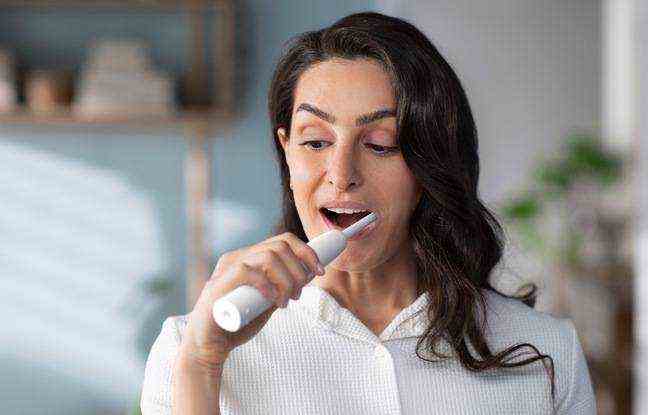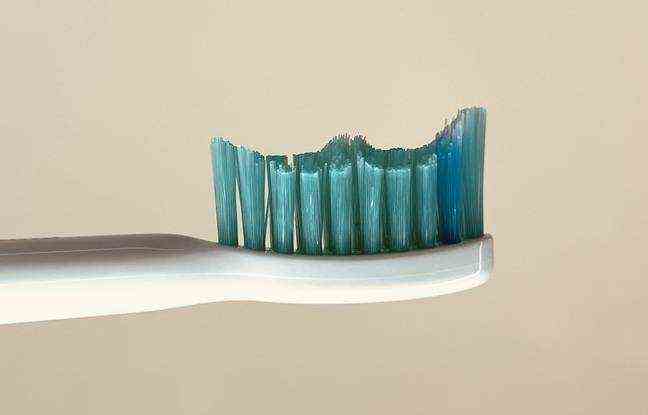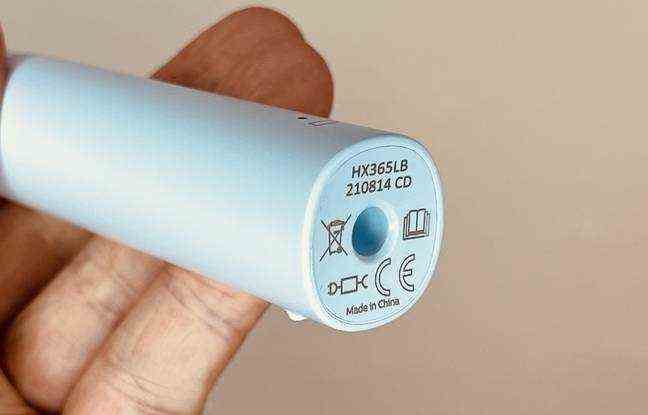Smile ! With his toothbrush
Sonicare 2100, Philips is trying to entice consumers who do not yet use an electric toothbrush. Sold only 29 euros, the device wants to democratize the use of this type of solution to promote oral hygiene.
Unboxed, the Sonicare 2100 is ready to use. Supplied with its USB induction charger, the toothbrush with its nicely tapered design does not wait any longer for you to fit your brushing head on its handle (a copy provided), to apply a dab of toothpaste and to apply it. we turn it on.
Attention to the first contact!
Anyone who has never used this type of toothbrush will be amazed at its somewhat shrill noise, but also at the vibrations of its brush head. Once in the mouth, we are also disconcerted by the first sensation it provides, like tickling. This first contact, which may at first seem a little awkward, ends up being forgotten. Warning: just because this toothbrush is electric does not mean that you should not apply the traditional brushing movements (from the gum to the tooth).

Every 30 seconds, the Sonicare 2100 beeps once. Why ? At the rate of two minutes of brushing (the time recommended by oral hygiene professionals), thirty seconds are necessary to properly brush each quarter of the jaw, up, down, left and right. By beeping, the toothbrush therefore indicates that you can change the brushing zone. At the end of the two regulatory minutes, the toothbrush turns off. Not bad for those who sometimes have trouble brushing their teeth for long enough …
A frothy and liquid mixture
Surprise: with the saliva, the toothpaste turns into a fairly liquid foamy mixture that quickly runs out of the mouth if you are not careful. You will be warned! We also note that the delicacy of the brushing head makes it possible to really tease the molars at the back of the mouth, an area generally more difficult to access with a manual toothbrush.

At the end of the brushing session, the feeling of freshness is there. By passing the tongue lightly over the teeth, an impression of cleanliness emerges, the teeth appearing particularly smooth. Tested for a week, the Sonicare 2100 gave us satisfaction. This duration is undoubtedly insufficient to offer more whiteness to the teeth, but the impression of a slight improvement is real.
A sonic toothbrush
The Sonicare 2100 toothbrush uses “sonic” technology, also championed by Panasonic. This differs from the “tilt and turn” technology of other toothbrushes (mainly those of the brand Oral-B). With a sonic toothbrush, the brush head is oval in shape and performs a considerable number of micro-oscillations that are felt as vibrations. Hence this impression of tickling.

With the Sonicare 2100, Philips evokes 31,000 movements per minute. This type of toothbrush can vibrate 15,000 to 62,000 times per minute! With an oscilo-rotating brush, the round-shaped brush head turns on itself and again performs a considerable number of movements (up to 48,000 per minute). In terms of effectiveness, sonic toothbrushes are particularly recommended for easier removal of dental plaque.

Another argument: a feeling of greater smoothness of brushing, which can appeal to people with sensitive gums. Whether you use one or the other technology (it is above all a question of brushing comfort), it is necessary to renew the brushing head of your toothbrush every three months or so. Count around 5 euros per unit for the Philips toothbrush.
Up to 300 euros
Still, the Sonicare 2100 is a fairly basic sonic toothbrush. More advanced models can be equipped with a pressure sensor to alert their user when they press too hard on the teeth or gum tissue. Some electric toothbrushes are also connected and weighted with an app to better control brushing. Like the Philips Sonicare 9900 Prestige, or the range
Oral-B iO, there are even some that embed a dose of artificial intelligence to guide their user towards more effective brushing while taking into account their brushing history. Not sure that this necessarily attracts the very general public, especially as these brushes can be worth up to 300 euros!

